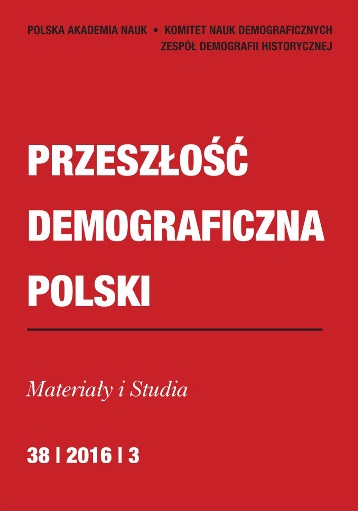Intercyza zawarta między Janem Klemensem Branickim a Katarzyną Barbarą Radziwiłłówną jako przykład realizacji strategii rodzinnych magnaterii (1720 r.)
Prenuptial Agreement between Jan Klemens Branicki and Katarzyna Barbara Radziwiłł as an Example of an Aristocratic Family Strategy (1720)
Author(s): Karol ŁopateckiSubject(s): History, Anthropology, Social Sciences, Geography, Regional studies, Human Geography, Historical Geography, Economic history, Political history, Social history
Published by: Wydawnictwo Naukowe Uniwersytetu Szczecińskiego
Keywords: prenuptial agreements; dowry; setting (supplement) of the dowry; trousseau; registers; jointure; family policy; aristocracy; Jan Klemens Branicki
Summary/Abstract: The article contains a legal analysis of the property relations resulting from the marriage of Jan Klemens Branicki to Katarzyna Barbara Radziwiłł. The wedding took place in Biała Podlaska on October 1st, 1720. By virtue of the document in question Jan Klemens Branicki was guaranteed that he would be given 200,000 zlotys and that sum would be paid in two instalments, in 1721 and in 1722. In addition, the dowry contained movables and valuables that were worth another 200,000 zlotys. The events here depicted reveal that the economic success of an aristocratic family to a large extent consisted in a skilful construction of the prenuptial agreement and later in enforcing its fulfilment. In the case analysed here it may be concluded that the future hetman obtained more than the Radziwiłłs. Firstly, he managed to gain better conditions for Katarzyna Barbara than Konstancja Radziwiłł got when she married Jan Fryderyk Sapieha in 1717. Secondly, he protected himself against delays in the payments of the dowry; the setting of the dowry was given after receiving the dowry itself, and the jointure agreement was concluded after the first instalment. Thirdly, in spite of a relatively low dowry, the value of the movables and cash paid within the dowry (200,000 zlotys) significantly exceeded 100,000 zlotys. The movables that Katarzyna Barbara Radziwiłł was given became part of the furnishings of the Białystok palace. Still fifty years later it was possible to find in the 1772 and 1775 registers three objects (two beds and a painting), which had been included in the 1720 dowry.
Journal: Przeszłość Demograficzna Polski
- Issue Year: 38/2016
- Issue No: 3
- Page Range: 31-54
- Page Count: 24
- Language: Polish

